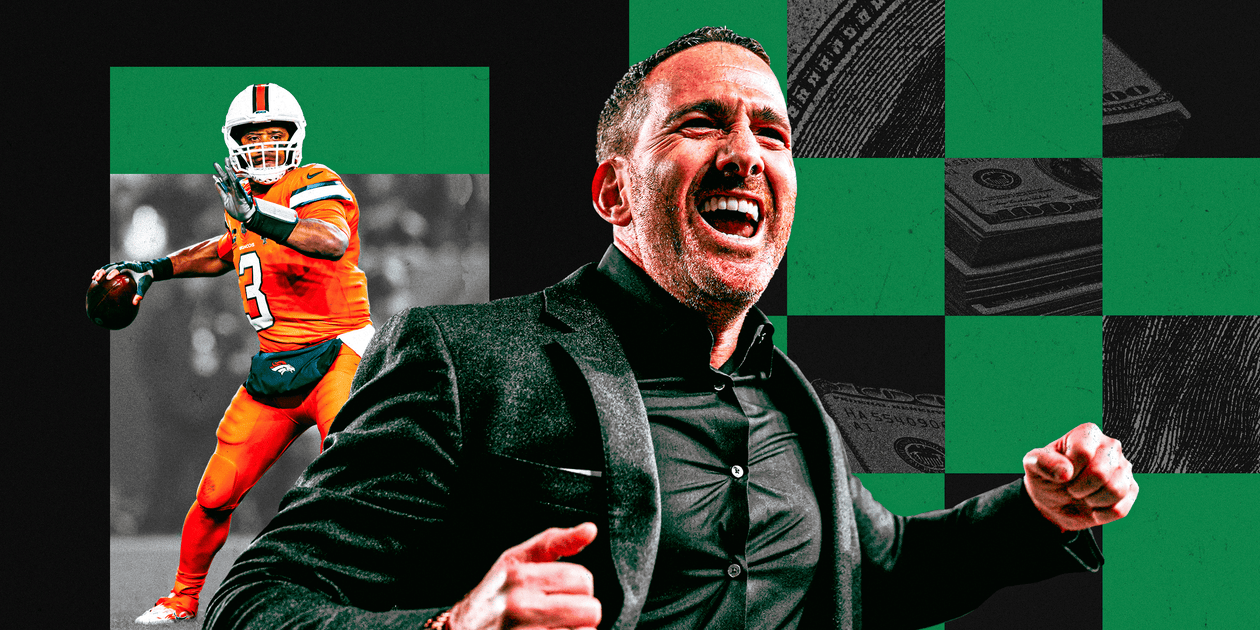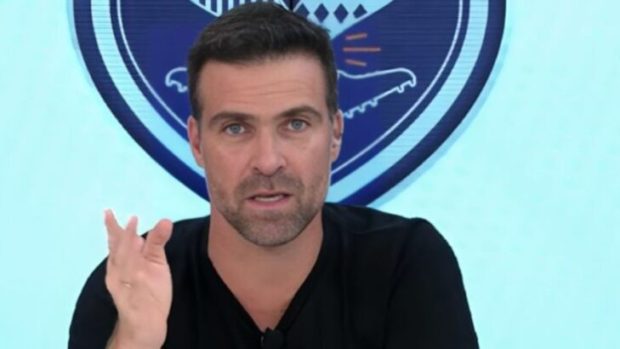

Sean Payton instituted a simple rule after constructing his first coaching staff with the New Orleans Saints in 2006: no using the word Katrina.
Payton, during his early years in New Orleans, spearheaded work with local charities to help rebuild a city ravaged by the hurricane. His team, which reached the NFC Championship Game in his first season, became a source of inspiration for a community trying to pick itself back up. When the Saints won the Super Bowl in 2009, they dedicated the landmark victory to the city full of people who had viewed the team as “a break from their reality,” as linebacker Jonathan Vilma once put it.
Advertisement
Banning the word Katrina certainly wasn’t about ignoring the impact the storm had on everyday life in and around New Orleans. It was about creating a organization-wide mentality that eschewed any excuses for not winning. It was about establishing a reality that Payton, now in his third season as the coach of the Denver Broncos, still references often, including at last month’s NFL annual league meeting in Florida.
“No one cares about your woes,” he said.
It was no surprise then that Payton and the Broncos adopted a similar mindset last offseason, when they made the decision to cut quarterback Russell Wilson and create a record $85 million dead money hit on their salary cap across the next two seasons. The Broncos chose to have $53 million of that money sit on their 2024 salary cap by releasing Wilson with a post-June 1 designation. That created a total of $89 million on last season’s ledger counted toward players not on the roster, according to Spotrac — roughly 34%.
The perceived financial barrier was a major factor in the gloomy punditry swirling around the franchise at this time last year. Inside the building, though, the Broncos saw only the opportunities a reset could present. The Wilson dead cap hit inside team headquarters was a dead topic.
“We’re not going to make excuses,” Broncos owner Greg Penner said. “Our job is to put the best football team on the field each season, no matter what the constraints are. You’re going to have obstacles that come up, whether they are injuries, something happens with a player or financial restraints with the cap, but we’re not going to make excuses. We’re going to do everything we can to be competitive each year.”
The Broncos last season made the playoffs for the first time since 2015, breaking the second-longest postseason drought in the NFL. In doing so, they became the most recent example of a team that has found ways to thrive in spite of — and, in some ways, because of — significant dead money baggage.
Advertisement
In 2023, four of the five teams with the league’s highest dead money totals made the playoffs. The Tampa Bay Buccaneers reached the divisional round of the postseason despite leading the league in dead money, a first in the NFL since the Dallas Cowboys did so in 2014. In 2021, the Los Angeles Rams won the Super Bowl despite playing with the fourth-highest dead money total in the league. The defending Super Bowl champion Philadelphia Eagles have the NFL’s second-best winning percentage since 2021 (including the playoffs) despite being among the NFL’s top eight teams in dead money each of the past four seasons.
Those recent successes underscore the fact that despite the negative connotation the term carries, dead money isn’t the unmovable anchor it is often made out to be. No team wants to be loaded with a massive hit like the Broncos took on when they cut Wilson, who went 11-19 as a starter with the Broncos after signing a massive contract with Denver following his trade from Seattle in 2022. But Denver and others have laid out a path to emerge from seemingly sticky financial situations that includes sound drafting, targeted free-agent acquisitions and, perhaps most importantly, effective and economical quarterback solutions.
“Every situation is a little bit different, (but) I do think you’re always going to have a little bit of dead money if you’re doing things properly,” Green Bay Packers general manager Brian Gutenkust said. “You don’t want it, but at the same time, if you’re trying to maximize your ability to win, you shouldn’t be afraid to have some of that.”
Dead money is, put simply, the remaining salary cap charge for a player who has been traded, released or retired, immediately accelerated onto a team’s books at the time of the transaction. Teams can spread out signing bonuses, option bonuses and other contract bonuses over the course of five years for salary cap purposes. Any of that prorated money not accounted for at the time of a player’s release, trade or retirement, plus any remaining guaranteed salary, is immediately pushed onto the team’s current salary cap.
Teams, of course, account for much of the dead money that hits their books while making long-term roster plans. Smart teams bake those totals in as a way to take advantage of increases to the salary cap that continue to balloon. The cap has jumped $71 million since 2022 alone, to a record $279 million in 2025, and no team has managed the dead money equation better in that bull market than the Eagles. One aspect of general manager Howie Roseman’s formula uses big cash spending up front — Philadelphia ranked third in that department in 2024 at $328.6 million — and void years on the back end that allow teams to push a player’s salary cap charges into future years. It’s essentially a guarantee of accumulating dead money, and Roseman laid out the reasoning for doing it during the NFL’s league meeting in 2022.
Advertisement
“It’s no different than when you’re trying to buy a house,” Roseman said at the time. “If you have the opportunity to buy a house and put all the cash down or the interest rates are really good and you’re going to pay it over time, why wouldn’t you use that money now and understand that as it goes forward you’re going to be able to do that?
“It’s the same money. If I give somebody $10 and I decide to prorate it, it’s the same $10 that’s going to affect my cap the same way, but if I’m doing it where the value of the cap is not $100 but now it’s $150, why wouldn’t I want to take it in those times?”
Even with sound long-term planning, though, managing big dead money totals requires deft, year-to-year maneuvering.
When Tom Brady retired after the 2022 season, he left the Tampa Bay Buccaneers with $35 million in dead money. It was the biggest piece of a pie that left Tampa Bay with more than $80 million in charges for players not on their roster in 2023, the highest total in the league. They had to restructure contracts and cut a handful of productive veterans to become cap compliant. It looked like Tampa Bay would be in a full rebuilding mode three seasons after winning a Super Bowl, but the Buccaneers were prepared for — and embraced — a pivot.
“It forces you, in the position we’ve been in the last few years, to really draft well and to rely on young players and some cheap labor to step into big roles,” Buccaneers general manager Jason Licht said. “It forces us, as scouts, as coaches and the organization as a whole, to dig a little deeper and turn over more rocks and be a little more open to giving other players opportunities. The proof has been there for a lot of teams. We’re very proud of the way we’ve come out of this with a young, ascending team.”
The Buccaneers pulled big contributions in 2023 out of players left over from the team’s Super Bowl championship squad, including wide receivers Mike Evans and Chris Godwin, offensive tackle Tristan Wirfs, safety Antoine Winfield Jr. and linebacker Lavonte David. They also hit on productive draft picks, highlighted by defensive lineman Calijah Kancey and linebacker YaYa Diaby, to bolster the defense. Most importantly, they found a quarterback solution that was hard to see coming based on their draft position (No. 19) and lack of free-agent spending power. Tampa Bay signed Baker Mayfield, who had been with three teams in the previous calendar year, to a minimum one-year, $4 million deal.
All Mayfield did was turn in the best season of his pro career, earning the first of two straight Pro Bowl appearances. He threw for 337 yards and three touchdowns in an NFC wild-card win over the Eagles. In a narrow loss to the Detroit Lions in the divisional round, he threw for 349 yards and three more touchdowns.
“We thought we had a chance to hit (with Mayfield),” Licht said at the end of the 2023 season, “and we really thought we had a chance to hit if he felt like this was his place, where he wanted to be.”
The Broncos’ biggest issue as they entered last offseason wasn’t managing the dead money resulting from Wilson’s release. It was finding a quarterback to replace him, a passer who better fit Payton’s vision for the offense. They drafted Bo Nix at No. 12 overall, making him the sixth and final quarterback selected in the first round. Nix turned in a better season than every rookie quarterback besides Washington’s Jayden Daniels, the NFL Offensive Rookie of the Year. Nix’s 29 touchdown passes were the second-most ever thrown by a rookie quarterback.
Advertisement
Nix was the biggest reason the Broncos navigated their dead money issue, but it wasn’t the only one. Like the Buccaneers, the Broncos had to move one from productive veterans like safety Justin Simmons, wide receiver Jerry Jeudy, center Lloyd Cushenberry and linebacker Josey Jewell. Replacements had to not only come cheap, but they also had to better fit the cultural and schematic vision Payton and the Broncos were trying to assemble. The Broncos managed to draw big value out of economical free-agent signings like safety Brandon Jones, defensive tackle Malcolm Roach and undrafted rookie outside linebacker Dondrea Tillman. Their draft class produced immediate contributors beyond Nix, including outside linebacker Jonah Elliss (five sacks) and seventh-round wide receiver Devaughn Vele (41 catches for 475 yards and three touchdowns).
“We really had to be strategic, and it’s not easy,” Broncos general manager George Paton said. “We didn’t hit on all of them, but we had to hit (because) we didn’t have all the money to go. Every year we do that, and you don’t always hit, but I just think you don’t always need the big splash. You don’t always need to buy your team. You build it the right way, you draft and develop, you’re selective in free agency. … For the most part, you just have to be more measured.”
The success enjoyed by the Buccaneers, the Broncos and others the past few seasons now puts a spotlight on the San Francisco 49ers, who are currently saddled with a league-high $86.6 million in dead money for the 2025 season. The 49ers, who have tried to cling to their Super Bowl window the past few seasons with quarterback Brock Purdy playing on a minuscule seventh-round rookie contract, finished a disastrous 6-11 in 2024. After a mass exodus of key players who were released or allowed to leave in free agency, the 49ers are, in general manager John Lynch’s words, are engaging in a “reset.”
The 49ers, Lynch said, are embracing the opportunity to get younger. San Francisco owns 11 picks in the upcoming draft, and they only have to look inside their own division to see how quickly a team can use a stockpile like that to emerge out of what seems from the outside like a cumbersome financial situation. Entering 2023, the Rams were coming off a similarly disappointing season in defense of their 2021 Super Bowl win. They moved on from key figures, including cornerback Jalen Ramsey, and piled up more than $80 million in dead money in the process. But they had 14 draft picks, and the Rams found immediate standout contributors, headlined by wide receiver Puka Nacua, defensive tackle Kobie Turner and linebacker Byron Young, who led the team back to the playoffs.
“I think the thing the fans should know is we have a plan,” Lynch said last month. “And we’re gonna execute that plan. And we’re excited about the opportunity.”
The 49ers also have a blueprint to follow. It has been laid out by teams who have proven in recent years that the words “dead money” don’t have to be off limits.
(Illustration: Kelsea Petersen / The Athletic; photos of Russell Wilson and Howie Roseman: Justin Edmonds and Mitchell Leff / Getty Images)
This news was originally published on this post .











Be the first to leave a comment